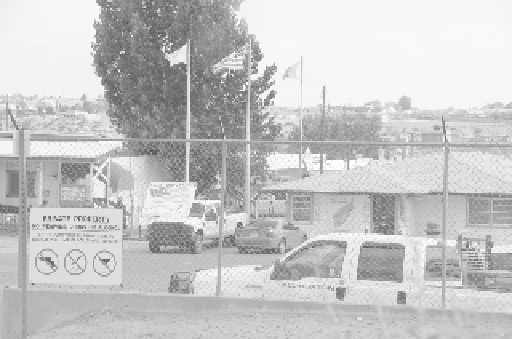Environmental Engineering Reference
In-Depth Information
16.6 Place-Based versus Extractive Communities
Dotting the desert Southwest are towns supported by place—revitalized small towns,
resorts, new-economy hotspots modeled on Silicon Valley in the wilderness, retirement
communities, and arts colonies. Some are strictly dependent on tourism, but many are not,
having attracted permanent entrepreneurial residents.
Precisely because they are place-based, it is harder to generalize about cities like Sedona,
Arizona, or Santa Fe, New Mexico, than about communities whose economies are wedded
to extractive industry. It is unfair but revealing to contrast an oil town like Farmington,
New Mexico, with art/realty/tourism-driven Santa Fe. Both are at the edge of this topic's
desert region; their economic strategies diverge, one based on removable resources, the
other on place.
Farmington
7
was so named for its truck farms and orchards, which once rivaled
Colorado and California for superb produce. Today, there is only one “production” orchard
in Farmington, plus one research farm funded by private wealth (Figure 16.3). Since the
1920s, oil and gas booms, each followed by a bust, have buffeted Farmington. Reliant on a
removable resource whose market value is volatile, Farmington's economy has repeatedly
suffered plunging tax revenues due to sudden drops in mineral market prices—similar to
what states and nations experienced in the 2009 recession.
Farmington's main drag shows the impact of haphazard extractive development, indus-
trial in scale, pattern, and disregard for anything local. Despite near-heroic revitalization
efforts, some pleasant new subdivisions, and remnants of the farm community it once
was, Farmington still gives casual visitors an impression dominated by drilling equip-
ment and cheap industrial buildings (some in use, some moldering), obscuring the town's
three major rivers and spectacular bluffs.
Farmington began its existence with a place-based economy, and lost it. The city
resembles Roan Creek in some ways, but not others. Roan Creek sold its water resources,
but could not buy a replacement. Oil profits, while they last, can buy an imported living,
but the
processes
of removal and boom-bust are destructive. When the exportive economy
crashes, place-based resources must sustain the community—resources that are all too
often compromised by each boom.
FIGURE 16.3
Despite a rare desert river landscape, Farmington today is visually dominated by extractive industry.


Search WWH ::

Custom Search